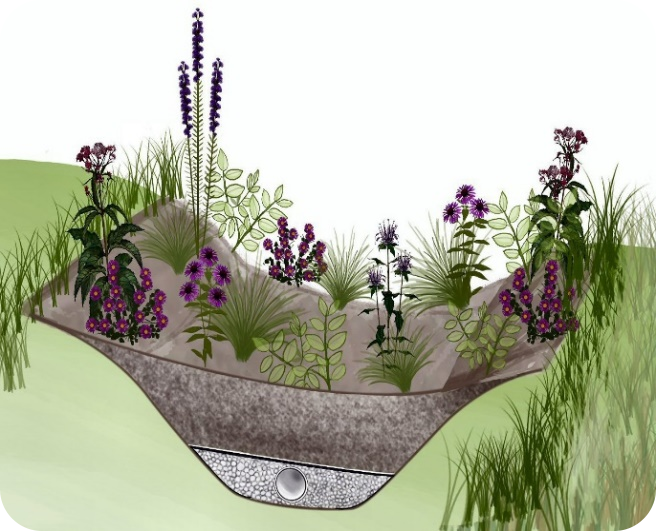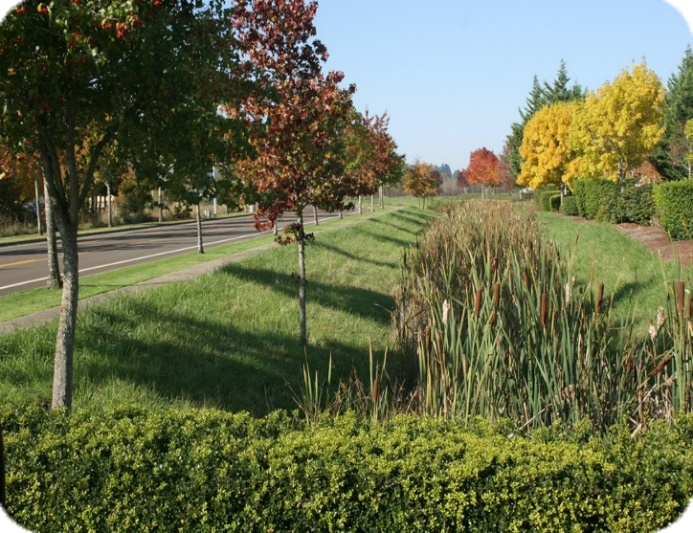Application: Aquifers, bridge abutments, drainage, roads, footpaths, stormwater outfall, wastewater treatment plants
Description: Bioswales are stormwater runoff conveyance systems that collect, infiltrate and treat stormwater runoff before releasing it to the watershed or storm sewer. They are linear ditches filled with vegetation, compost and/or riprap. The water flow path, along with the wide and shallow ditch, is designed to maximize the time water spends in the swale, which aids the trapping of pollutants and silt. The vegetation reduces water velocity, allowing it to accumulate in a bioswale, and filters suspended sediments. Microbes in the soil digest organic nutrients. The water then moves to another filtration level made of sand or rocks. If bioswales are constructed on porous soils, the stormwater detained in the trenches can infiltrate into the ground below. This allows the rainwater to recharge the groundwater below rather being flushed into the sewer system. Bioswales may be designed to contain check dams that facilitate pond formation, further increasing infiltration and decreasing stormwater flow.
Contribution to climate resilience: Bioswales detain stormwater before it is infiltrated or discharged downstream, thus improving water quality (by removing pollutants) and reducing erosion and other damage associated with runoff. They thus reduce the negative impacts of heavier rainfall and storms, which are expected to increase (in the wet season) with climate change.
Supplementary sources of information:
http://www.esf.edu/ere/endreny/GICalculator/BioswaleIntro.html
http://greencampsinitiative.org/wp-content/uploads/2015/04/bioswales1.pdf
http://www.nrcs.usda.gov/Internet/FSE_DOCUMENTS/nrcs144p2_029251.pdf
This resilience-building measure is sourced from the Water Resource Adaptation Guide (2019) published by the National Council for Sustainable Development at the Ministry of Environment in Cambodia. The full Guide is available to download at URL https://ncsd.moe.gov.kh/sites/default/files/2019-10/Water%20Resources%20Adaptation%20Guide_March%202019_En.pdf


